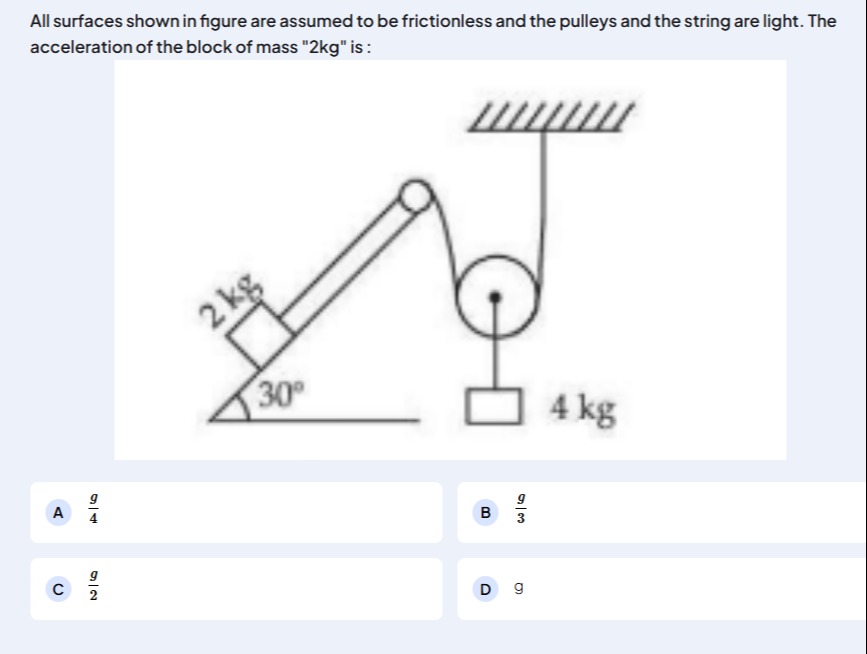Question
Question: All surfaces shown in figure are assumed to be frictionless and the pulleys and the string are light...
All surfaces shown in figure are assumed to be frictionless and the pulleys and the string are light. The acceleration of the block of mass "2kg" is:

4g
3g
2g
g
2g
Solution
Let a1 be the acceleration of the 2kg block up the incline and a2 be the acceleration of the 4kg block downwards. The string has tension T.
For the 2kg block (m1=2 kg): The forces along the incline are tension T upwards and the component of gravity m1gsin(30∘) downwards. The equation of motion is T−m1gsin(30∘)=m1a1. T−2g×21=2a1⟹T−g=2a1. (1)
For the 4kg block (m2=4 kg): This is a movable pulley system. The relation between accelerations is a1=a2. Let a=a1=a2.
The equation of motion for the 4kg block is m2g−T=m2a2. 4g−T=4a. (2)
From (1): T=g+2a. Substitute T into (2): 4g−(g+2a)=4a. 3g=6a. a=2g.
